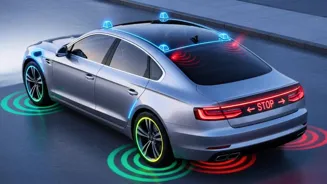
A recent study has found that fitting vehicles with brake lights at the front could lead to a significant reduction in road accidents by improving communication
between drivers and increase overall visibility. The study, conducted by researchers at the Institute of Vehicle Safety at TU Graz in Austria, analysed 200 real-world accidents using computer simulations. The findings revealed that front brake lights could reduce collision rates by between 7.5% and 17%, mainly due to faster reaction times from oncoming or cross-traffic drivers. In nearly 25% of the simulated cases, vehicles equipped with front brake lights experienced lower impact speeds, thereby reducing injury severity and improving pedestrian safety. While the addition of front brake lights may not prevent all accidents, researchers noted that their presence often helps reduce the force of collisions, potentially saving lives and lowering the risk of serious injury. The concept was further tested in Slovakia, where 3,072 vehicles were fitted with front brake lights over a period of six to eleven months. Driver feedback was largely positive, with 75% of participants supporting the idea of incorporating the feature in future vehicle designs. Many reported improved clarity in traffic situations and greater awareness of surrounding vehicles’ braking behaviour. Despite promising results, implementing front brake lights faces significant regulatory challenges. Introducing red brake lights at the front would require widespread changes in automotive design standards and road safety regulations. However, experts argue that just as the introduction of high-mounted brake lights in the 1980s helped reduce rear-end collisions, front-facing brake indicators could play a similarly transformative role in the future. (Source: CarScoops)

















